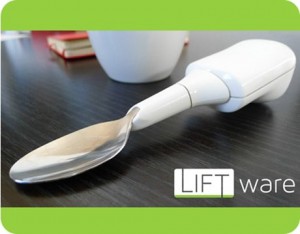In another health technology breakthrough, scientists have successfully managed to design and manufacture a shake cancelling device.
As essential tremor causing uncontrollable hand-shakes is a common disorder in older ages, scientists from the University of Michigan Health System conducted a study that evaluated a new device which cancels the effect of hand-shakes resulting from essential tremor. The device was developed by a team from the startup company Lift Labs.
15 adults living with essential tremor participated in a clinical trial to test the use of this spoon. Participants were better able to hold the spoon with less tremor, which allowed them to scoop food and take it up to their mouths to eat- tasks which were found difficult to perform using regular utensils.
The concept behind the device’s work is called ACT (Active Cancellation of Tremor), where small electronic devices sense motion in different directions, and then make a quick counter movement to stop the original motion. The device could be attached to chosen utensil to make feeding time a less conscious and more enjoyable time.
Kelvin Chou, U-M movement disorders specialist who worked on testing the device for Lift Labs team stated that 30% of patients with essential tremor do not respond to medications. Chou added that the range of movement caused by tremor was much less upon using the device, causing more normal movements of eating utensils attached to the device.
The research was conducted by having 15 participants use the device to eat while the device is turned on and when it is off. Neither the researcher, Chou, nor the participants could tell whether the device was on or off by touching it. Three measures were taken throughout the experiment. Improved ability to hold the spoon midway between the table and the participants’ mouths was recorded when the device was turned on.
The tested population excluded people living with movement disorders causing hand tremors (e.g., Parkinson’s disease), so the device’s efficiency is not yet specified with such populations.
Source: UofMhealth.org
Photo: Liftlabsdesign.com




